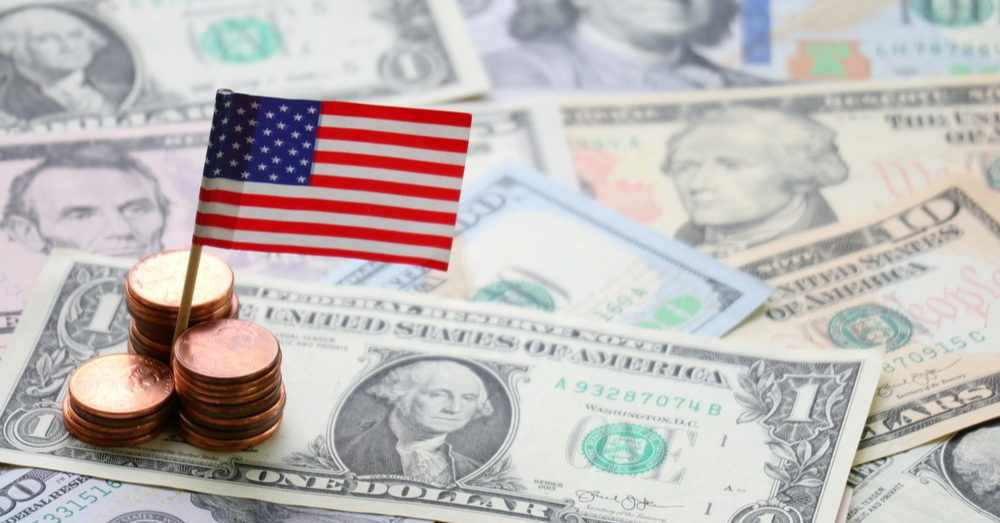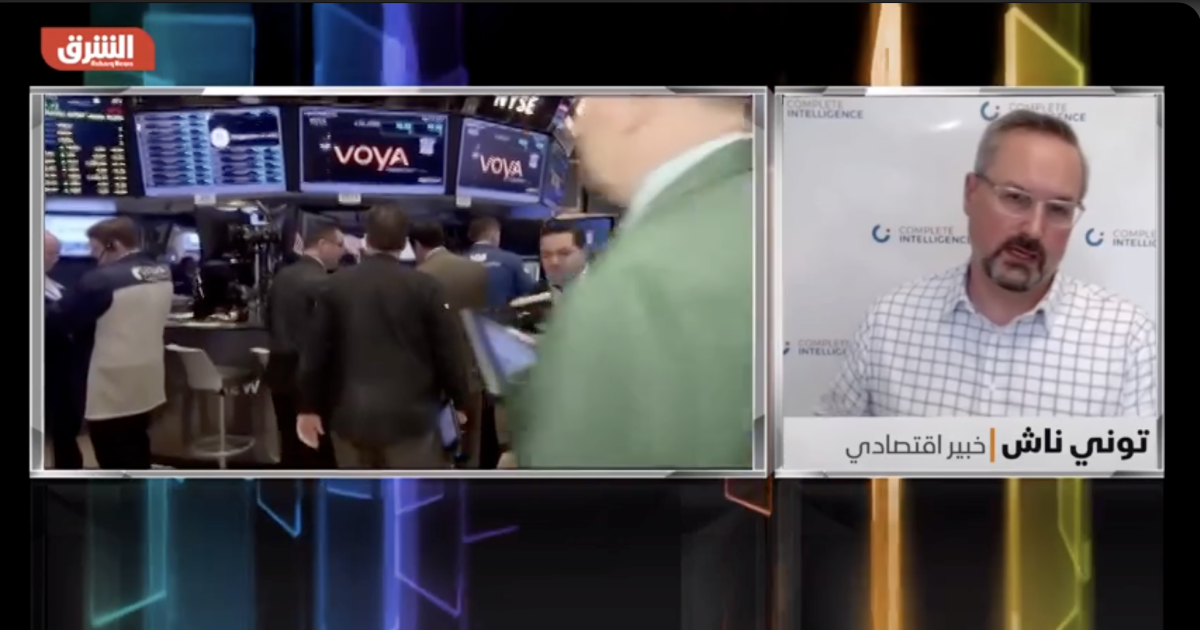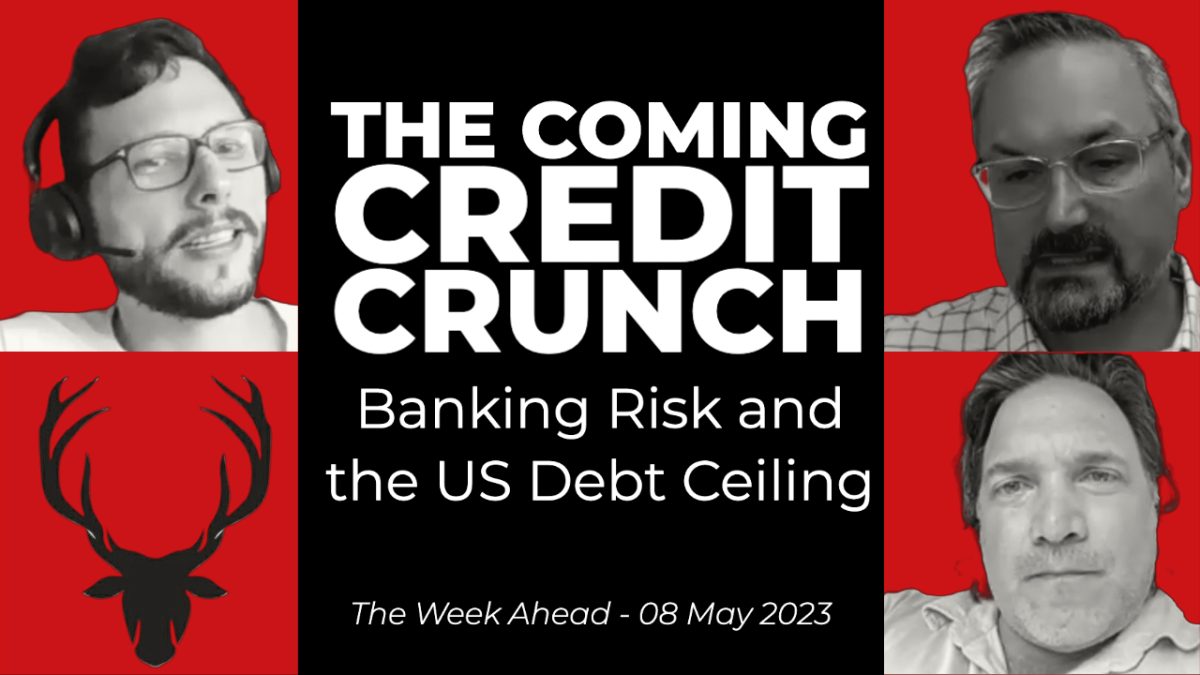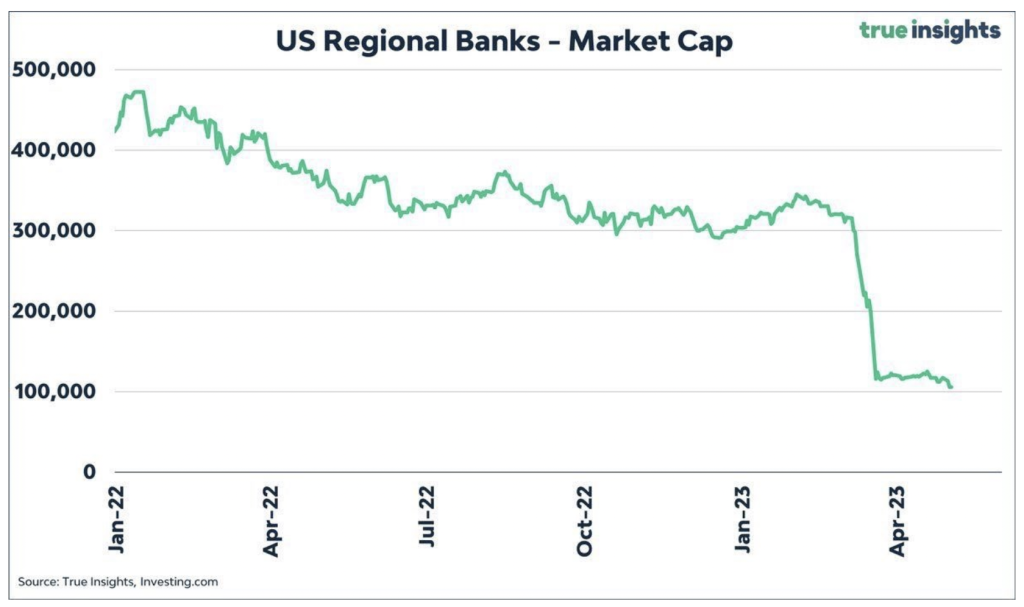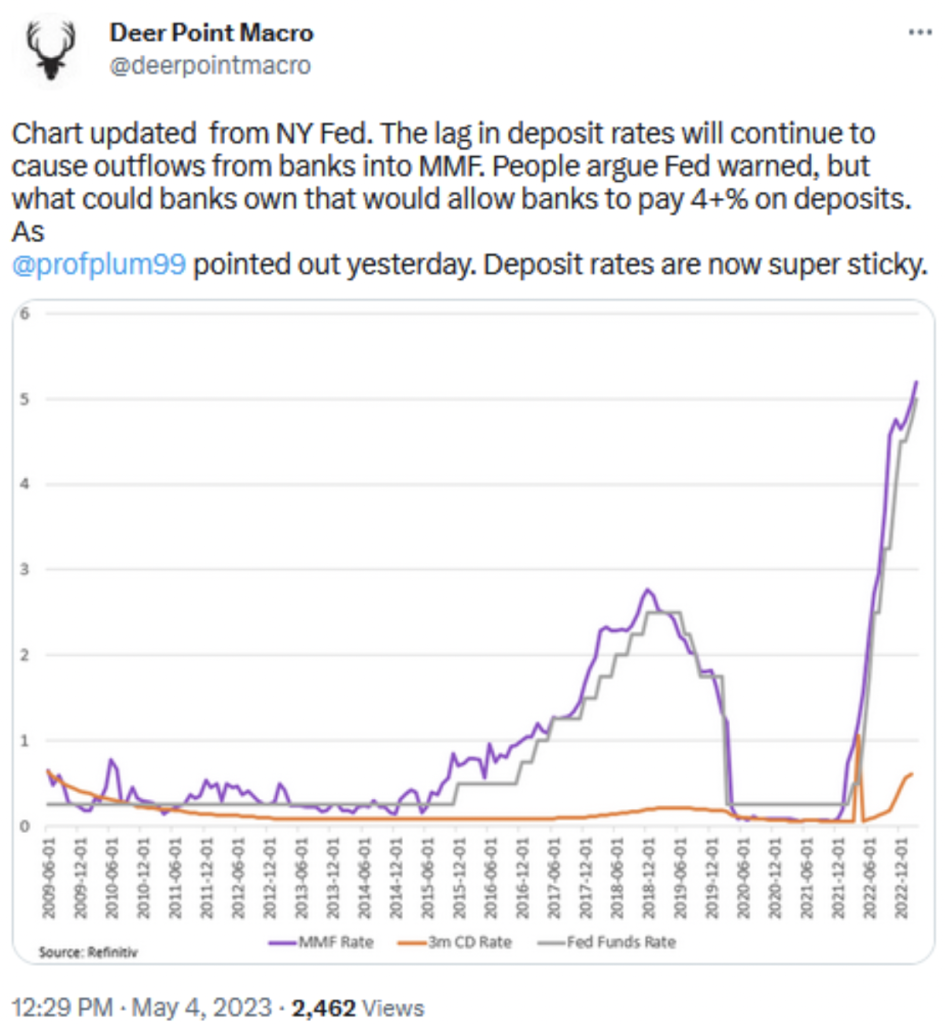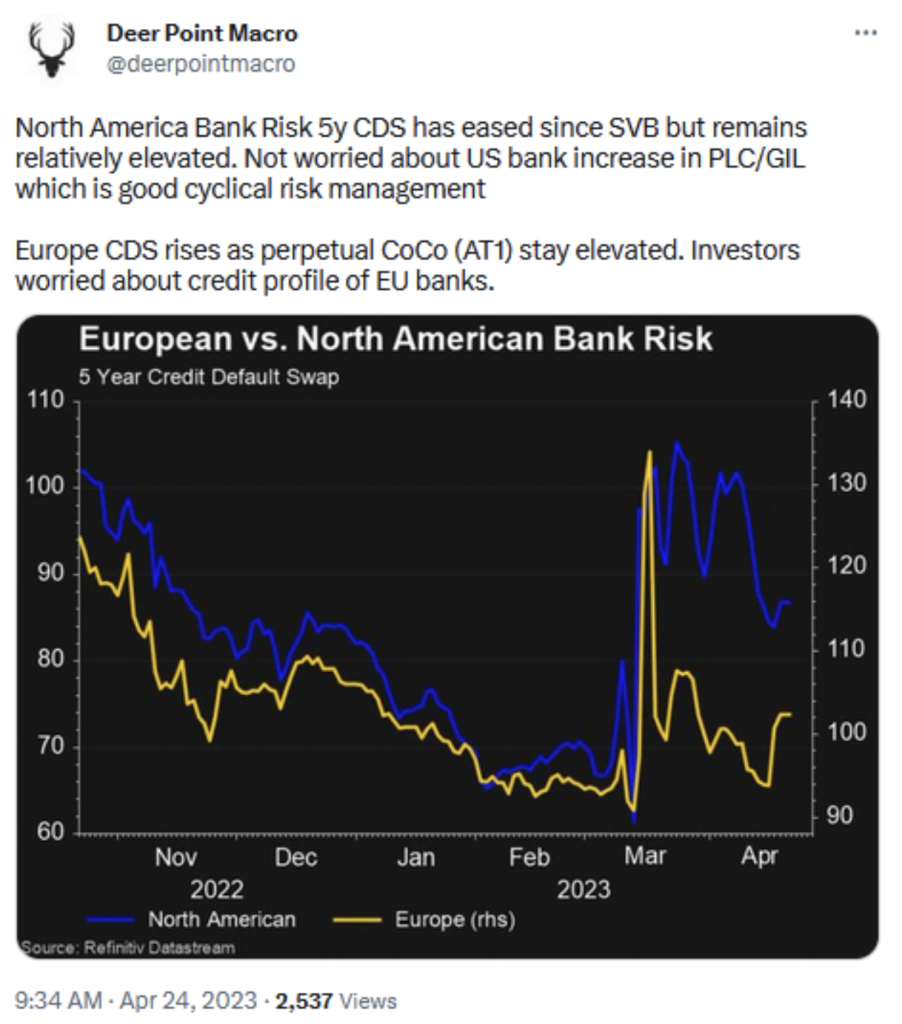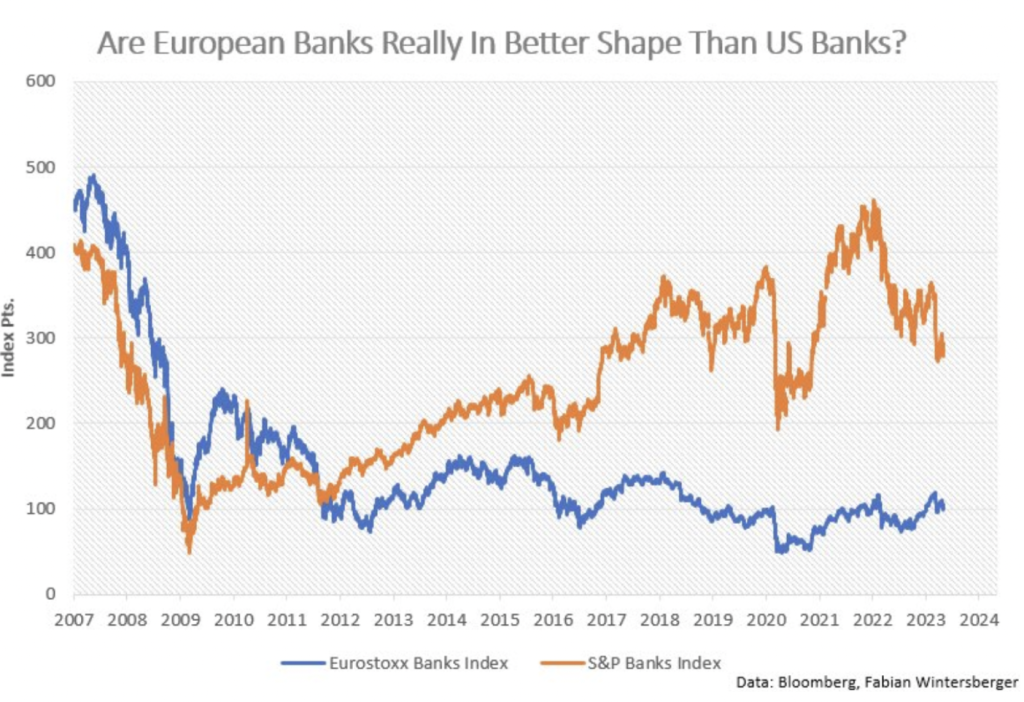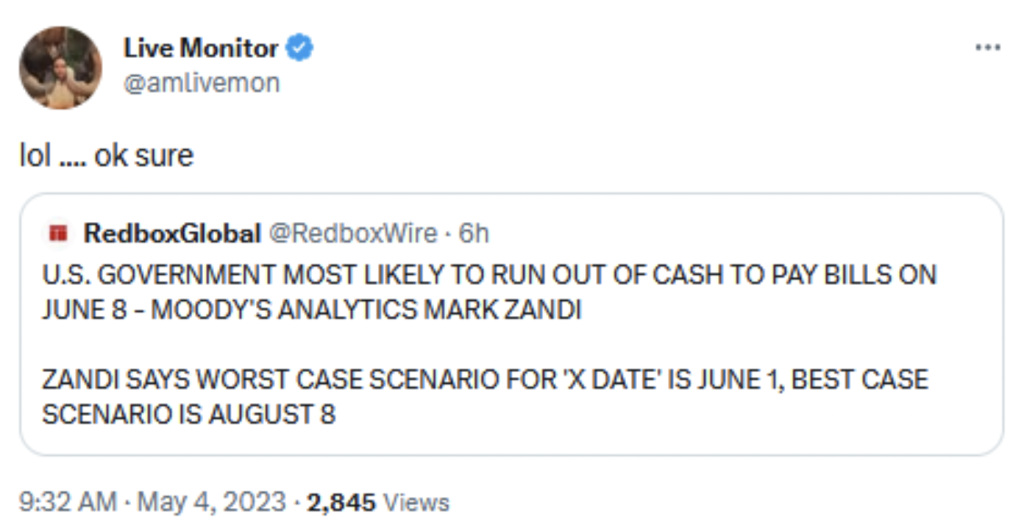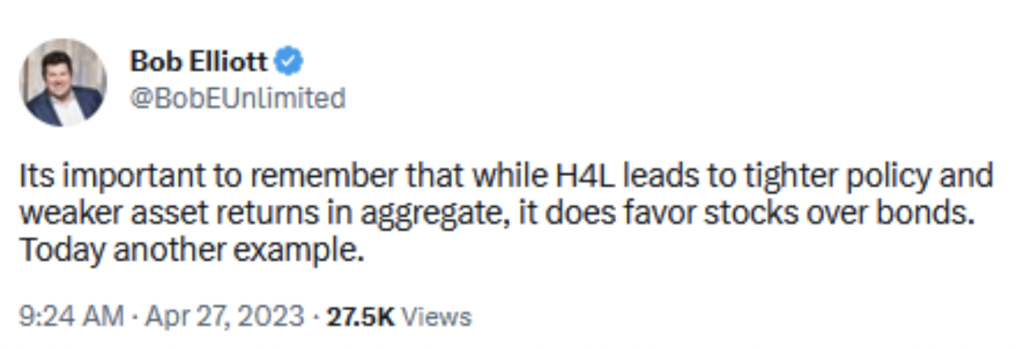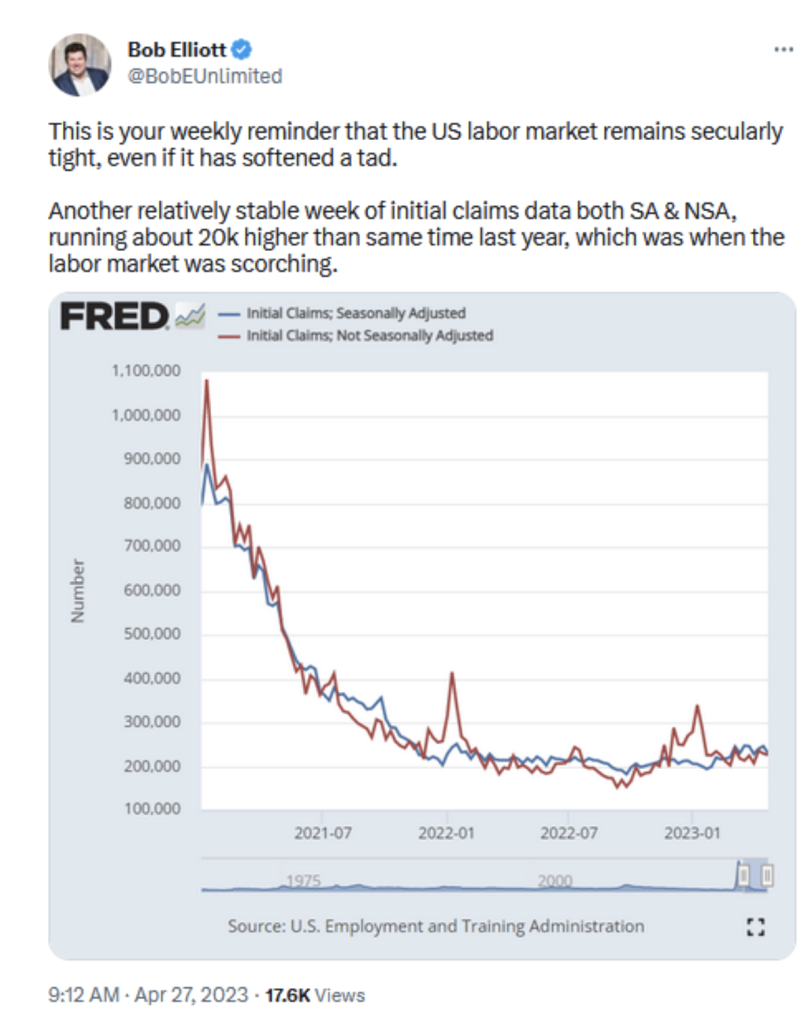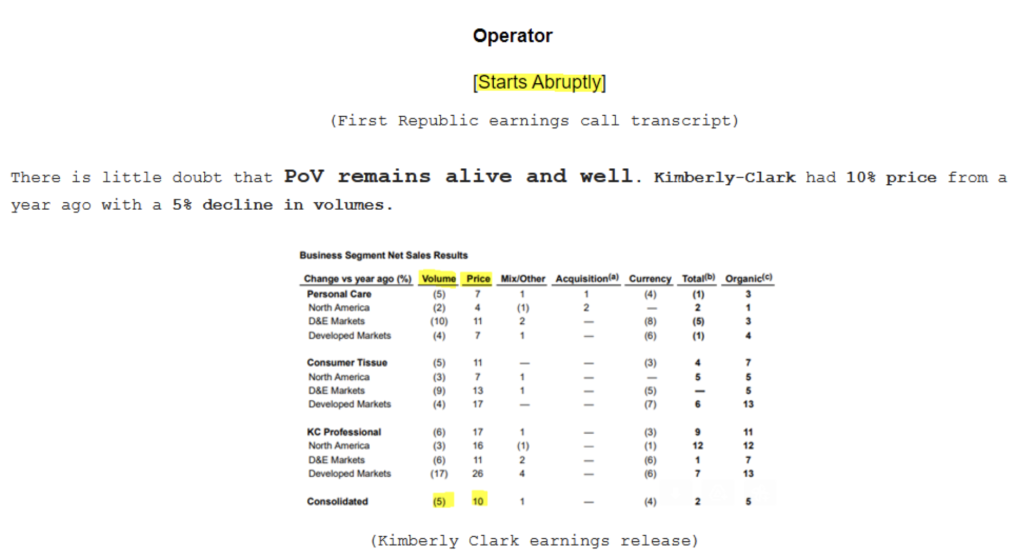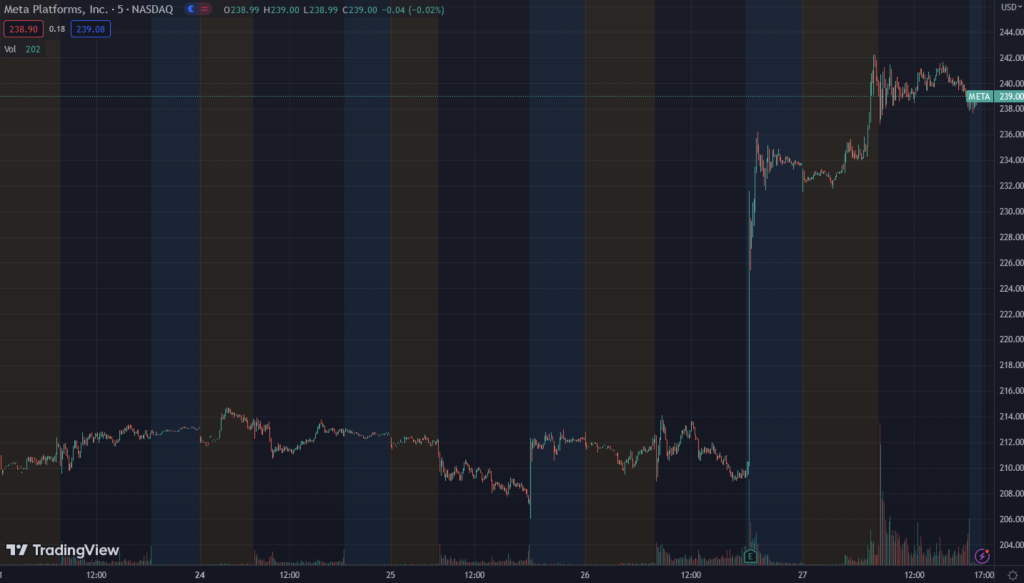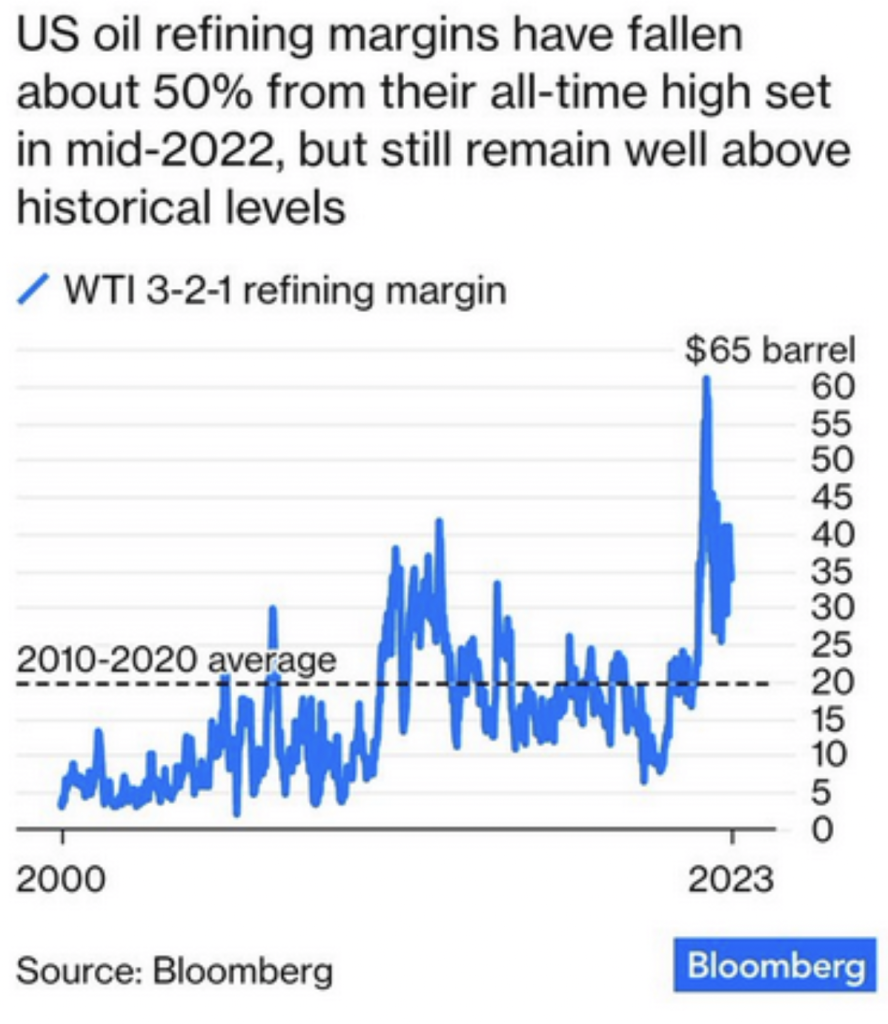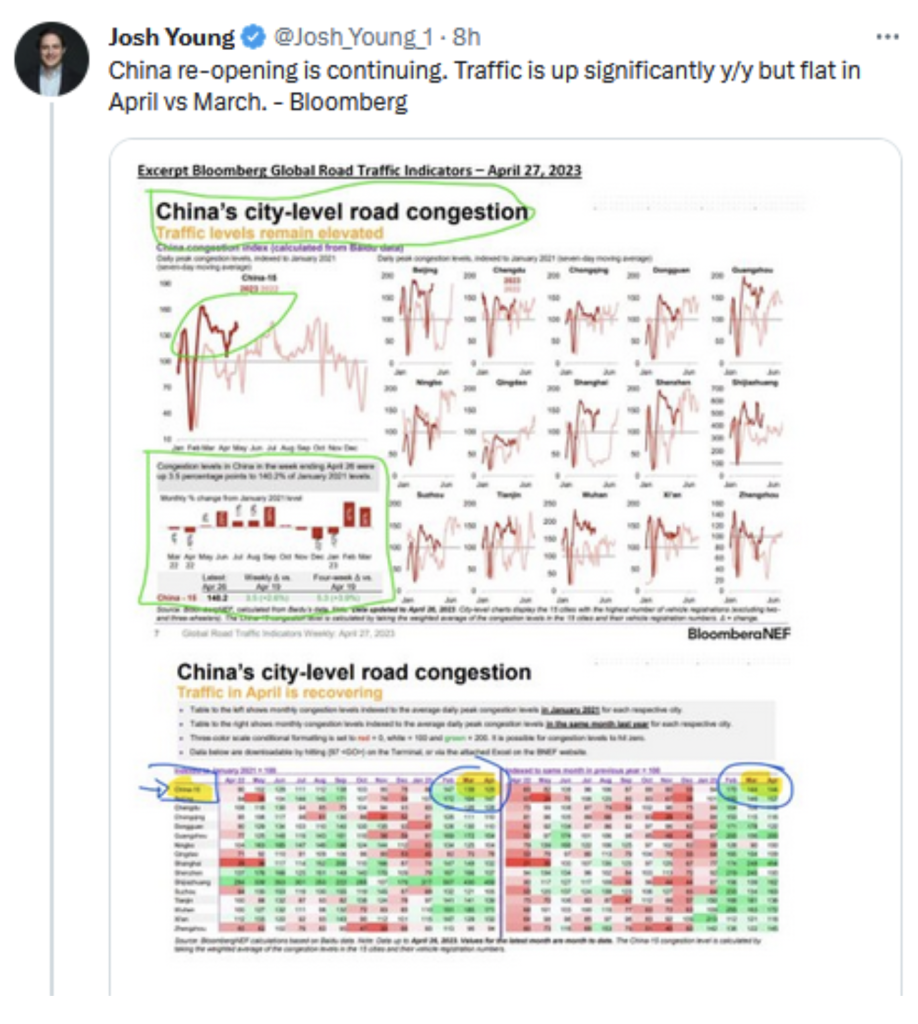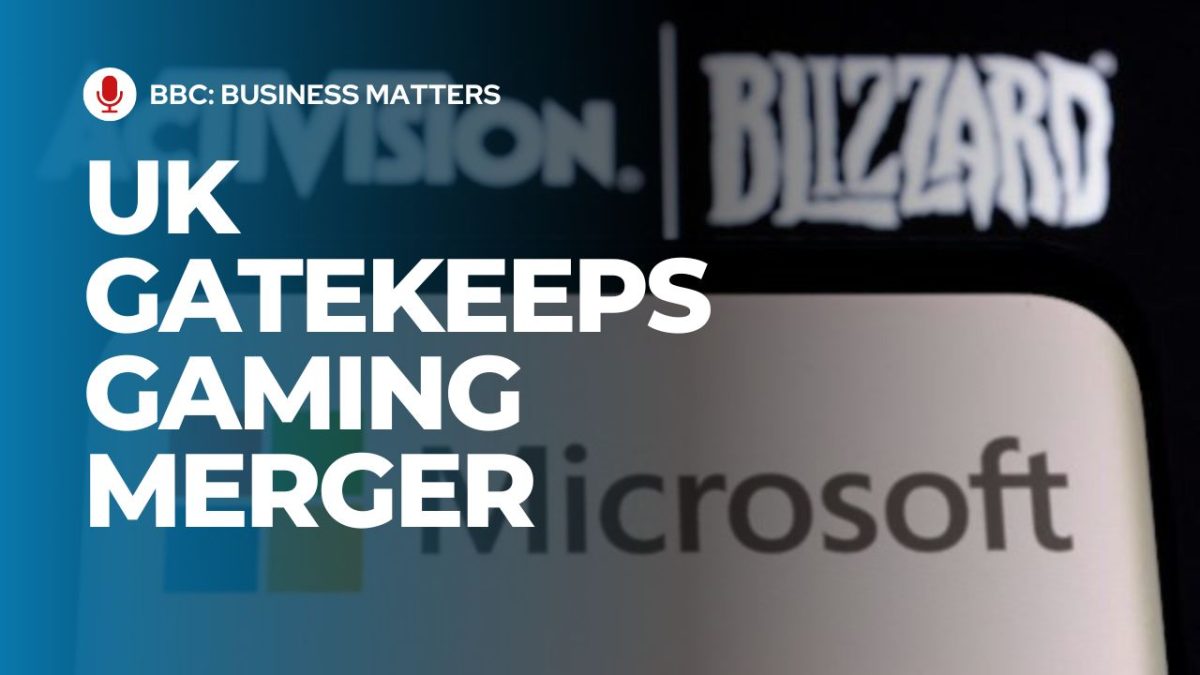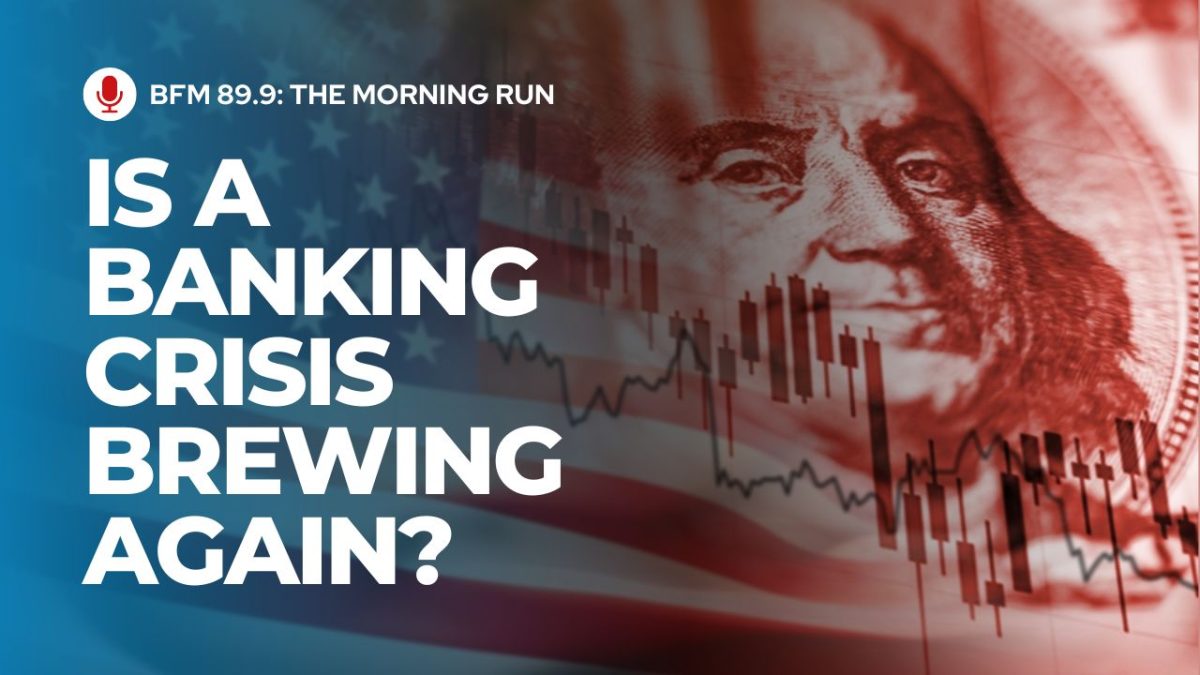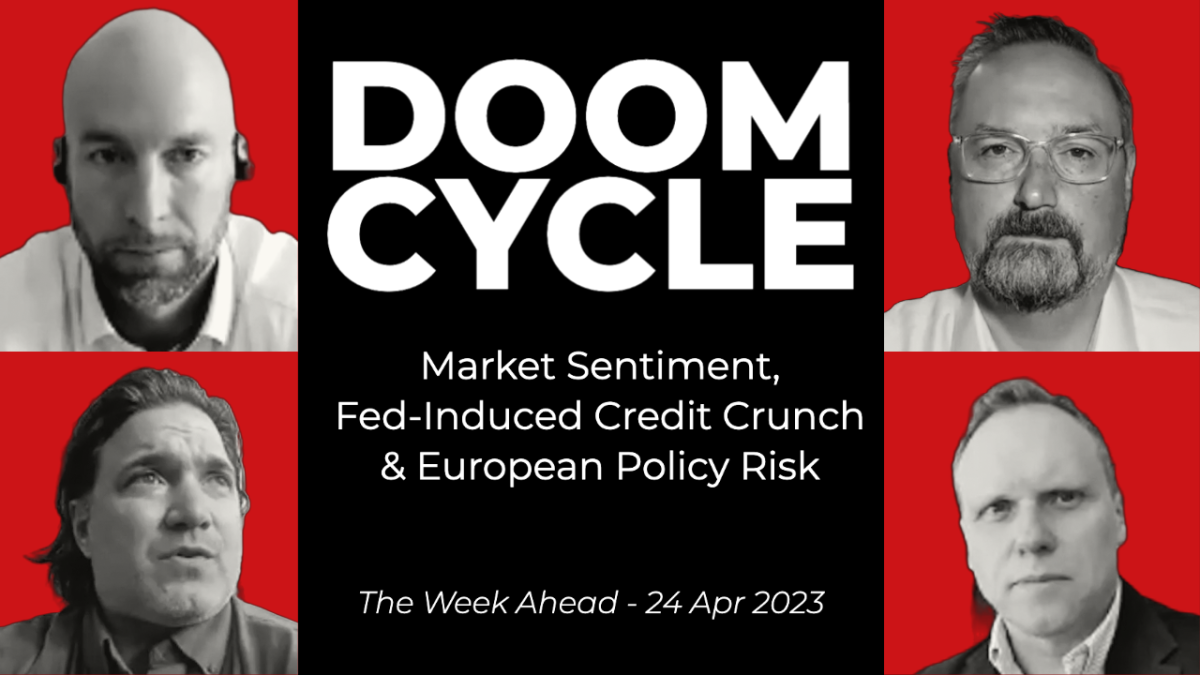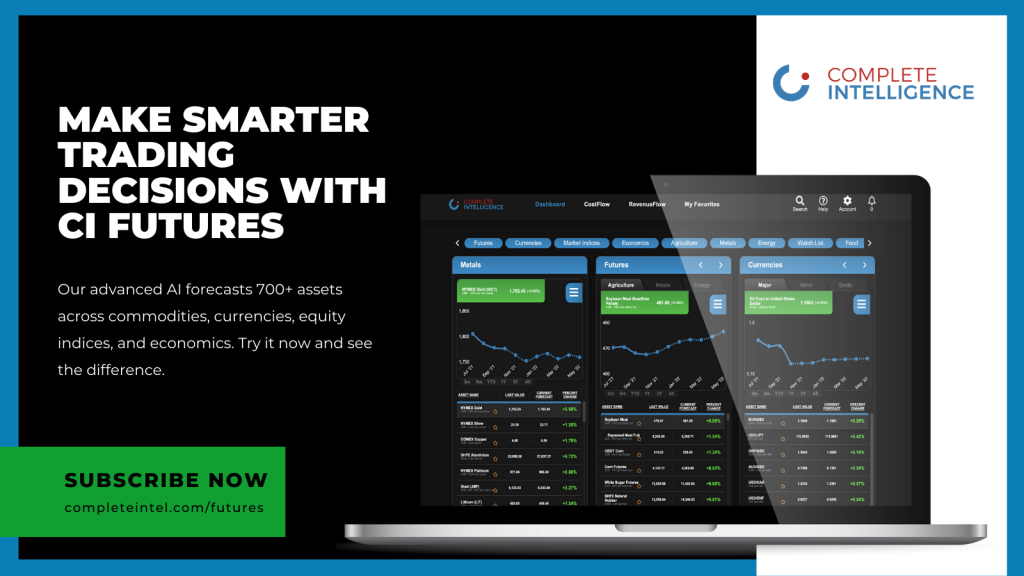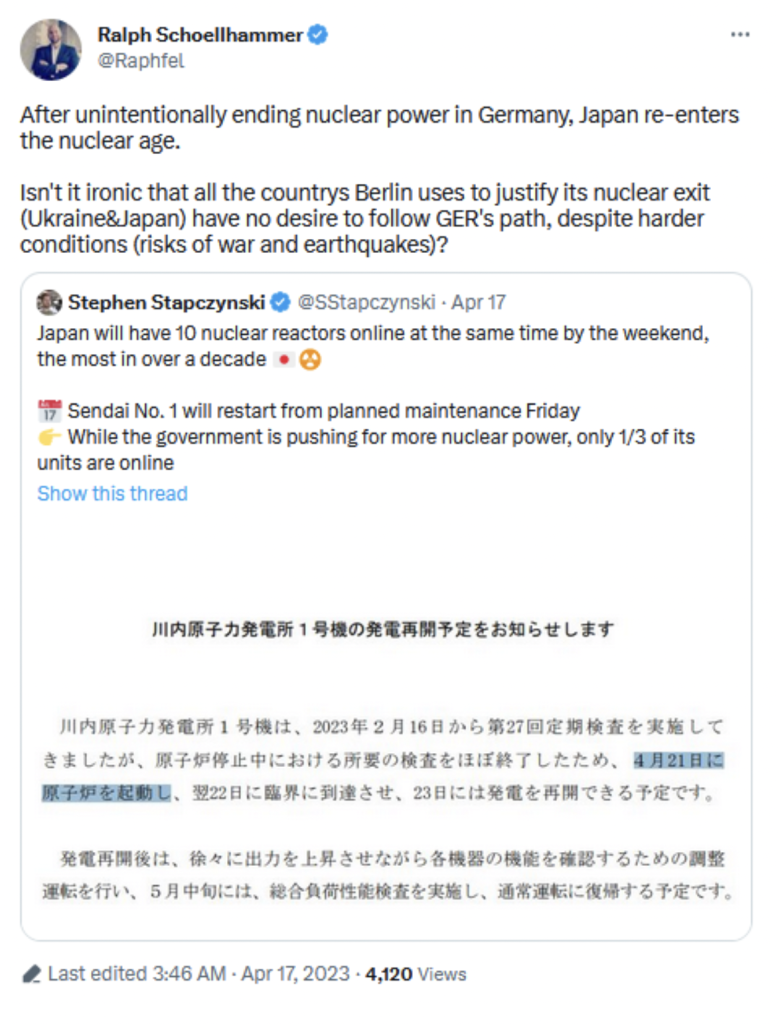Explore your CI Futures options: https://completeintel.com/futures
In this episode of “The Week Ahead,” our guests discuss key themes affecting the markets. Tracy Shuchart, Anne-Marie Baiynd, and Amelia Bourdeau share their insights on oil equities, diamonds and gold, and tactics for navigating choppy markets.
Tracy starts the discussion by noting the decline in crude oil prices and the impact on oil equities. She expects crude prices to continue to fall, with institutions playing a crucial role in the market. Tracy highlights that investors should also keep an eye on geopolitical factors that could affect the oil market.
Amelia talks about the diamond market and her work at Diamond Standard. She explains that the diamond market is different from other commodities due to its unique characteristics, such as limited supply and high demand. Amelia also discusses the recent sell-off of gold by Palantir and whether it’s an indicator of things to come. She notes that while there may be short-term fluctuations, gold is a good hedge against uncertainty and inflation in the long run.
Anne-Marie shares her tactics for navigating choppy markets, pointing out that it’s essential to focus on the charts and technical indicators. She suggests looking at key levels and using them as a guide for trading decisions. Anne-Marie emphasizes the importance of risk management and encourages investors to have a plan for both bullish and bearish scenarios.
In conclusion, the panelists agree that uncertainty and volatility are part of the market, and investors should be prepared for them. They suggest having a long-term perspective, keeping an eye on geopolitical events, and using technical analysis to navigate choppy markets.
Key themes:
1. What’s ahead for oil equities?
2. Diamonds & gold!
3. Choppy markets
This is the 65th episode of The Week Ahead, where experts talk about the week that just happened and what will most likely happen in the coming week.
Follow The Week Ahead panel on Twitter:
Tony: https://twitter.com/TonyNashNerd
Tracy: https://twitter.com/chigrl
Anne-Marie: https://twitter.com/AnneMarieTrades
Amelia: https://twitter.com/AmeliaBourdeau
Transcript
AI
You with CI Futures, you can access AI-powered market forecasting for as low as $20 a month. Get 94.7% market forecast accuracy for over 1000 assets across commodities, currencies, equity indices, economics and stocks. With weekly updates, one-month and three-month error rates and top ten and bottom correlations, you can rely on CI Futures to help you make informed decisions. Join a growing number of satisfied users who have already transformed the way they invest with CI Futures. Don’t wait. Start forecasting with confidence today for as low as $20 a month.

Tony
Hi, and welcome to The Week Ahead. I’m Tony Nash and today we’re joined by Tracy Shuchart, Anne-Marie Baiynd and Amelia Bourdeau. This week, we’ve got a few key themes. The first is oil equities. We’re going to talk to Tracy about what’s ahead for oil equities. We’re going to talk to Amelia about diamonds and gold, and we’re going to talk to Anne-Marie about choppy markets. We’ve seen quite a lot about that this week. So guys, thanks so much for joining us. I really appreciate your time on a Friday.
Tony
Tracy, let’s start off with oil. We’ve seen crude prices falling over the past month and with it we’ve seen share prices like Chevron, ExxonMobil.
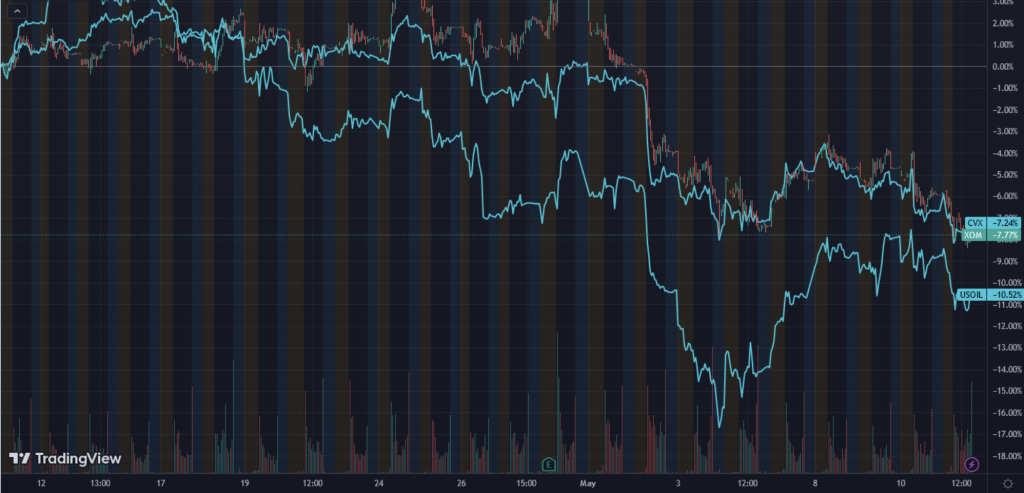
So where do you think crude prices are going? And I guess more interestingly, how will they affect oil equities?
Tracy
Well, I think right now what we’re really seeing is we’re kind of seeing this shift because people are expecting a rate pause into tech. So we’ve seen a lot of volume going to tech, especially the mega cap in the tech sector. We’ve seen a lot of money come out of value stocks, and that obviously includes oil. So that’s partially the problem.
Tracy
Also, oil equities tend to follow oil prices. So oil prices have been very soft lately and those have proceeded to follow. The thing is that the fundamentals remain really strong in this market, right. And so it’s more of a thing of there’s just not a lot of participation in this market and we’ve seen that over the last six months or so. So this isn’t something new necessarily. I think it’s going to take a lot for people to really get into this market. We’ve seen more Russian barrels on the market. They never came off. They said they were going to cut 500,000 barrels. We haven’t really seen that translated into exports. Exports still remain high and then China is still lagging a little bit as far as their recovery is concerned, even though they are they did just buy 15 million barrels a day of oil, which is an all time high for them.
Tracy
But the markets really seem to be more worried about the recovery in other sectors, particularly like housing and building and things of that nature, and of course, recession fears.
Tony
But we see things like travel doing really well, right? How bad do they think housing is going to get?
Tracy
As far as China is concerned, or as far as China or US?
Tracy
Well, I think that the property sector is imploded. Right. There’s just not really a lot of interest there. In fact, there was an article that just came out this morning on how I think it was a Bloomberg article on how foreign investors are just really skittish to get back into the China market after the housing implosion. And because of the whole COVID issue.
Tony
And the fact that foreign executives are now monitored and travel restricted and all that stuff, and that’s a huge risk.
Tracy
Yeah, absolutely. And so I think that is part of it as well.
Tony
So you just posted a piece this morning, I think, about exports from the US. I think six and a half million barrels a day or something like that?
Tracy
Yeah, the exports are all-time high. It’s actually four and a half million barrels on average for the month of March, which was unfortunately the EIA data lags two months when they come out with their monthly. But those are all time highs. So that’s excellent news for the US. I expect that to continue. There’s no reason why it shouldn’t. And that’s especially good news, obviously, for Texas, because Permian is the best basin right now. That looks like it can actually increase a little bit in production, where all the other basins are falling in production.
Tony
Okay, and then what about OPEC? What what are your expectations for OPEC? Do you think they’re going to hold? Do you think they’re going to cut supply even more? What’s your outlook there?
Tracy
I think we’re going to have to see. It’s just May is when they really started initiating these voluntary cuts. Right. So we’re really going to have to give that a month or two, I think, to really see if that filters into the market. And does that translate again to exports? We did see UAE say they were cutting back on exports, 5% for the month of May. So, so far so good. I know there’s a lot of talk that, well, it looks like Russia isn’t keeping to their 500K. We don’t really know because they stopped reporting numbers. All we can do is trace it by exports and those haven’t come down. And so there was talk, chatter that OPEC might just forget it and turn on the tax and whatever. But I am of the opinion that’s definitely not going to happen, because if you look at all these countries, particularly Saudi Arabia, they have a lot of big plans, like they have neom, and they’re trying to expand and make it. A tourist hub in Salmon has just a lot of plans, and so they need the money. I don’t think they’ll flood the market knowing that the demand is not there and risk crushing oil prices because they’re not going to be able to sell more if the demand is not there.
Tony
Right. So how does that translate to oil companies know of stocks?
Tracy
Well, what’s really interesting is I had a Spaces this week and I was talking to Jeremy McCray, who is the institutional energy advisor for Raymond James, which is a big institutional banking and investing conglomerate. But what he said, what he’s seeing with his institutional buyers is that he’s seeing institutional buyers with large amounts of AUM start to get really get interested in the industry again. And these are players that tend to hold for a very long time, whereas the hedge funds, the hedges and the CTAs aren’t holding for that long. They have a high turnover yearly of their stocks. And so we’ve seen a lot of volatility, even though it’s been upwards since 2020. Definitely stocks are well up their low equities, but it’s been a very bumpy ride. We’ve had 30% drawdowns a lot. Right. As far as investors are concerned, that’s a really promising outlook, looking for maybe perhaps more stable prices and not so much turnover in these stocks.
Tony
Okay, great. Do you guys have any questions?
Anne-Marie
I have a couple of them, Tracy. In terms of these institutional investors, which I was going to talk to you about because that Spaces was just incredible. Do you think that their decision to move into that sector again is a combination of them just being beaten down or the ESG noise just getting a little bit more quiet as we see a lot of people saying, well, I just don’t know about these ESG things if we’re going to be able to do what we need to do. What do you think the reason is that they’re focusing there?
Tracy
I think we’ve seen a big turn when we saw Vanguard in January come out of the ESG banking sector group. I forgot what it’s called off the top of my head, but that was a big turn of events. And then you’re seeing a softer stance from even people like BlackRock right, that were very adamant against it. And then you have Jamie Dimon, who is very pro oil and gas. And so I think what people are starting to realize, or at least these big banks, big institutional banks are starting to realize that we still going to need oil and gas for a very long time and that it’s proven to be highly profitable where some of these renewables are very subsidized. Right.
Tracy
And those stocks, if you look at solar and wind stocks, they haven’t been performing that well at all. And so there’s an opportunity in the energy sector. It’s not going away soon. And I think that you’ll have individual investors start to hop on that train once they see these bigger banks kind of coming around to the sector more.
Anne-Marie
Thank you.
Amelia
I wanted to ask about this was kind of a lot of talk in the macro world when OPEC or Russia, when they make these production cuts and then is it usual that they don’t always obey them or there was like this real debate in the macro community?
Tracy
Well, it used to be that they didn’t. Right? Absolutely didn’t. And that was part of the big debacle in 2020. What happened is there was a falling out between Russia and Saudi Arabia, and they turned on the taps. Russia turned on the taps, Saudi Arabia turned on the taps, and then COVID hit, and then we got negative oil prices as a result. But I think since that kind of disaster, we’ve seen a complete turnaround in the cohesiveness of this group. And so people, I think that it’s the old OPEC plus when it’s really not anymore, and they really have said how dedicated they are to this group and to keeping production levels at what they say they’re going to be.
Amelia
Right. Okay.
Tony
And is part of that, Tracy? Obviously, it’s internal group dynamics. But is part of that also, say, Europe and say the US kind of pushing back against one of their members very aggressively in Russia? Has that driven those members closer together?
Tracy
Well, I think in some respects, yes. I also think that the US. Is not really a threat to OPEC anymore as far as production is concerned. The all time highs were in 2019, that was over 13 million barrels a day. We’re not there, and we’re probably not going to see those highs again. And you’re not seeing oil companies. They’re not going ho crazy. Let’s just fly by the cedar of our hands. We’re going to just drill, baby, drill. Right. They’re more focused on keeping shareholders and share buybacks and paying down debt, paying dividends. And so that mentality is kind of gone in almost an impossibility just because of a lot of the tier one wells are gone, right. Just not drilling for them anymore. I think that OPEC feels a little bit more in control now as well.
Tony
Okay, so you said, drill, baby, drill. So I’m going to ask about this. Trump had a town hall on CNN this week, and one of his answers around inflation was drill, baby drills. So how realistic or how feasible would that be as a policy if we had maybe not Trump, maybe Trump, somebody else who said, yes, we’re going to clear all of the, say, regulatory and other issues. We’re going to encourage American drillers to drill. How feasible is it to get back up above, say, 10 million barrels a day in the US?
Tracy
Well, I don’t think you’re going to see, well, we’re above 10 million barrels a day right now. We’re at 12.3. But that said, I think government can only go so far, right. You can permit all you want. You can make things easier. You can open up acreage in Alaska. There’s a lot of things the government can do as far as things on federal lands, can’t really do anything on private land. So that’s more kind of really the bulk of that, Alaska and New Mexico, but they can’t really make companies. You know what I mean, so they can make things easier for them absolutely. Right. And they can provide incentives. But again, I don’t think just because they do that necessarily means these oil companies are going to do that. We’ve had a boom and a bust, okay?
Tony
I’m spending way too much on oil. I’m sorry, ladies, but just how much of the pullback in drilling is regulatory and how much of it is interest rates and how much of it is other factors? I’m just curious from your just in terms of broad strokes.
Tracy
Yeah, I mean, broad strokes, really? There are a lot of supply chain issues. There still are some supply chain issues. We have a huge labor problem still because there just aren’t enough people to work in industry. Right. And there’s not people we’re not seeing that younger generation interested in oil anymore, right, because they’re of the ESG movement. So that’s really huge. Those are problems outside of anything the government can do and that are hurdles for the industry right now.
Tony
Okay, great. Thank you for that, Tracy. That was really good. I appreciate that.
Tony
CI Futures is our subscription platform for global markets and economics. We forecast hundreds of assets across currencies, commodities, equity indices and economics. We have new forecasts for currencies, commodities and equity indices every Monday morning. We do new economics forecasts for 50 countries once a month. Within CI Futures, we show you our error rates. So every forecast every month, we give you the one- and three-month error rates for our previous forecast. We also show you the top correlations and allow you to download charts and data. You can find out more or get a demo on completeintel.com. Thank you.
Tony
Amelia. Let’s move on to diamonds and gold. I think it’s a really fascinating time for both right now, and I’ll admit I know nothing about diamonds. So could you talk us through the diamond market a little bit and help us understand what you’re doing at Diamond Standard?
Amelia
Yes, for sure. I’m going to start opposite. Let me just show you our diamond standard commodity and then I’ll go into the diamond market because I kind of need a reference of the commodity. So what happened at Diamond Standard is our founder, Cormac Kenny, and he comes from a background of computer science and building trading systems for hedge funds. So he’s from the finance world and he made a diamond commodity. And how he did that is he figured out about 94% of all investment grade diamonds, gem quality, above ground. And diamonds are obviously different from one another in terms of color, cut, clarity, and carrat and the size of it. So he found a way to group diamonds into these commodities that are geologically equivalent to each other. So let me show you. They’re kind of held in resin, and I don’t know if anyone can see this, but here it is. Here’s a diamond commodity. This one is worth the the bar is worth about $51,000 today. And this is a coin and that’s $5,100 today. So a coin to another coin is fungible, meaning it’s geologically equivalent. So they’re not the same as each other, but they’re, as I said, the geological equivalents.
Amelia
And so that’s what makes them good for delivery, for the CME, for CoMax. So they’ve already been rated as good for delivery. Then on the back they’re on the blockchain. So that’s a blockchain token. And what that allows a person who holds them to do is normally if you’re in the United States, say, if you wanted to hold the physical, you’d store it at vault and brinks. And then if you wanted to trade it, we have a spot market, you would just trade the token so you don’t have to physically move the actual commodity. So that was the breakthrough that diamond standard, and that’s why it’s called diamond standard. They created a standard for diamonds that is fungible and now able to trade. And as we want to, we want to move into financializing diamonds. So we have a spot market. We’re going to have futures and options and eventually an ETF similar to when gold we think of ourselves like in the precious metals category when the GLD was launched back in 2004 and kind of that position, build that. Took place into it and subsequently. But let me just kind of talk to you quick about the diamond market, because it’s really a fascinating market.
Amelia
I mean, diamonds are a $1.2 trillion natural resource and they’re under allocated financially compared in investment world compared to other precious metals. So investors hold about 2% of diamonds and they hold anywhere from 15 to over 30% in the case of gold, of other precious metals. So this is definitely a commodity that hasn’t been financialized yet. And we get this question a lot because there’s the rise of lab grown diamonds. I wanted to kind of address that in two ways.
Amelia
Natural diamonds are rare, so they’re from a supply standpoint. So most mining analysts believe that diamond production peaked back in 2005 at 177 million carats. So by comparison, last year in 2022, 115 million carats were mined. So that’s 35% lower. And that’s expected to hold steady for a couple of years and then dip again around 2025, 2026, because these major mines that have been operating some for 70, 50, 40 years are running out, they’re coming offline. And so there is a real supply constraint. There hasn’t been a new mine, a large find, one that could operate for say, over 20 years, there hasn’t been a mine in decades that’s been found. Petra Diamonds, which is a major diamond mining company, has said that when they explore, less than 1% of things that they find are viable.
Amelia
So there isn’t a lot of hope, I guess, on the horizon that some big geological discovery is going to be made in terms of supply. And so you do have that dwindling of the natural diamond. And then on the other side, you kind of have I wanted to address the lab grown. You have this big rise, especially in China and India, these manufacturers of the lab grown diamonds, and these new companies are popping up all the time, so that lab grown diamonds are really expanding. It’s interesting because some are really beautiful. When you look at them, you can’t necessarily tell that they’re not a natural diamond. It’s just that when you put them under microscopes and you have the graders, because Gia and IGI, the graders, they will grade a lab ground, and they will tell you it’s lab ground. It’s pretty much immediately apparent because natural diamonds are formed over thousands of years, and lab growns are made very quickly. So their molecular structure, when you look at that, is quite different.
Tony
How do you tell the difference? Are lab grown almost too perfect or something like that? Again, I’m not a diamond expert. I don’t know anything about it. But I’m just curious, when they look at it under a microscope, what are the tells? Do you know?
Amelia
It’s really the molecular structure of it.
Anne-Marie
Yeah. The refraction is also significantly different between the natural and the this is very interesting that you’re talking about these, because I have all kinds of thoughts around the diamond industry. So I’m interested to come on. Well, how would you combat the group that says still the De Beers hold the foothold, really, for diamond distribution in the world? Still. And a great much of diamond supply is still held by De Beers. Right. They keep it underground in great big vaults. Yada, yada, yada. And so a lot of folks have posted over the years that De Beers is actually in charge of that mass marketing event that propagates the notion of the diamond industry being a good one to be in. And of course, for many years in I think it’s is, it Amsterdam where they literally… Antwerp. There we go. The other a one.
Anne-Marie
They actually have done business for years and years with a handshake. If you’re not completely honest with everything, they’ll snuff you out and kick you out. So it really is one of the rare industries where contracts aren’t used. They feel like if you have to sign a contract and your word is not your bond, then you don’t belong in our business. And so that community has been really closed because they keep all those very highest quality in very low distribution environments. And so is there anything, if someone like me that says, oh, the diamond ETF industry has been trying to gain traction for quite a bit of time. And I love the fact that you guys have tokenized it and it’s on the blockchain, so I assume it’s contract. It’s got a contract thing on there, on the back end of that blockchain business.
Amelia
If you can see you can kind of see purple dots, those purple dots are all the certificates that go with you. Look it up. And also you can find this meaning when it’s activated, if you want to know, it’s like sitting in the vault, and what position in the vault is in, this will tell you.
Anne-Marie
So I know that’s kind of a probing question since there seems to be an organization, a couple of organizations at the very top of the heap that have always tried to keep supply constricted. Does it ever concern you that they might one day say, hey, listen, we’re going to let some of these out because of XYZ? I don’t think they’re going to, because there’s no benefit to them. But have you had people ask those questions?
Amelia
Yeah, for sure. I mean, it’s interesting that you bring up De Beer. So, in general, the mining supply is definitely the supply of natural diamonds is definitely on a downtrend. The largest supplier, which is almost equal to De Beers and slightly depends on what year you look at it. Slightly larger than the beers in the market is, of course, Alrosa, the Russian partially state owned diamond company. And so they mine about 40% of the world’s diamonds, and De Beers is just underneath at maybe 35%. So it’s very interesting because, as we know, the G7 meeting is coming up in Japan next week. So there’s been a lot of talk about further sanctions on Alrosa, the problem. So that would further shrink the supply. So when you mentioned De Beers controls the market, well, Alrosa actually mines as much or more than De Beers. So there is a more diversified diamond mining industry than there was, say, 50 to 70 years ago, for sure. And so that’s another supply constraint that’s likely going to hit the market. There have been various sanctions, but Russian diamonds, in theory, can get through because of the substantial transformation language in imports, basically.
Amelia
So if they were mined in Russia somehow rough mining, then the rough diamonds are sold to one of the Polishing centers, Antwerp, India. India is a huge polishing. You mentioned Antwerp, but most of the diamonds are polished out of India now, and so a substantial transformation can take place. It’s really difficult to trace the provenance of a stone, meaning where the the mine is mined and the country it’s mined. And that’s that’s just been a problem for ages with the diamond mining industry. Maybe now with technology and blockchain, they can solve it. But there will probably be some sort of announcement in a week to ten days time from the G7 about further sanctions somehow on these Russian diamonds. They’ve definitely been talking to the diamond dealers, but it’s a problem where it’s just very difficult to solve how they would implement this sanction. There are some major jewelry companies that have self sanctioned meaning they have told their suppliers, which are the middlemen, the middle people, the polishers and cutters, that they’ve made them sign legal agreements that they won’t take Russian diamonds, that they must be separated. So that’s a little bit more of addressing as well your concern or the point you brought up, which is a good one, about things being done on a handshake.
Amelia
I don’t really think that’s the case anymore. I mean, there’s been such Tracy kind of mentioned it as well, with, I think, the younger generation and more concerned about ESG or things like that. They’ve really demanded where this diamond comes from, making sure it’s not a conflict diamond, which is Kimberly processes for the Kimberly process works with the US. Go out, and they’ve been doing that since 2003. But I think that there’s more paper, more legal agreements in place that say Russia in an Indian supplier. Those diamonds need to be separated, and there’ll be more diamonds going to Western states, which will be supply constrained, and those Russian diamonds most likely will go to, like, China and the Middle East.
Amelia
So it’s interesting, I think, that the diamond industry in one way is very traditional. In another way, it’s really evolved, I think, because the consumers have demanded that it evolve, and especially now with the two of lab grown diamonds, and they need to be graded and separated as well. And that’s obviously very important. And IGI and Gia work to do that. Huge diamond graders. And I just wanted to get back to the point originally about because we get to ask this question so much about our lab grown diamonds a threat, I think we think, especially if we’re continuing to buy natural diamonds into physically backed ETFs and for financial purposes, those will be natural diamonds.
Amelia
And we have a diamond exchange, actually, that we made that one of the first electronic diamond exchanges for price transparency. We have 185 manufacturers on it. Those are the cutters and Polishers who sell diamonds to us. So all that pricing is transparent. And just like anything else, we bid low and we bid until somebody we buy about 10,000 diamonds a week to separate into groups for our commodity. But eventually the diamond industry will need the lab grown diamonds, right? Because what are Zales what are Jared going to do when the natural diamonds become so exclusive or obsolete that it’s really partier using them? Only a graph that can kind of the mall jewelry stores will all convert most likely to lab grown diamonds so that they continue to have jewelry. So that’s kind of how we see it progressing.
Tony
That’s interesting. I didn’t think about the mall jewelers or whatever converting to lab grown diamonds.
Amelia
Or tiny ones like in watches, when you just have tiny accent stones as opposed to
Tony
Fantastic. Now this is really great. Like I said, I know nothing about diamonds aside from Luluzi’s diamond in his forehead. So it’s a little mysterious.
Amelia
I just wanted to make a point, too. It’s kind of interesting because obviously right now, diamonds haven’t been financialized. We’re in the process of doing that. So the majority, like 90 over 90% of above ground diamonds are used for gemstone. So that’s personal consumption spending. And obviously there’s varying degrees of people calling for recession in the US. So that will slow because the US is diamonds largest market, where over 50% of the world’s consumer diamonds come to the United States. The second largest market is in China. But we just had Q1 results for luxury goods houses LVMH and Rishma, Advanced Leaf and LVMH, who owns Tiffany’s and Bulgaris, and they had extraordinary sales in Q1 and it was driven, of course, by the reopening in China from the Pandemic restrictions. But that reopening in China. We can’t expect the big lift from reopening all year, but that kind of acts as a tailwind. So it’s interesting when people talk about slowdown in consumer spending, at least for diamonds, it’s very high end, has just no stoping it right now.
Tony
Yeah, okay, great. So let’s move on to gold, because I know it’s super polarizing and with worries about the dollar and the banking crisis and all that stuff, it’s really pushed up the price of gold over the past month. So I’m going to make some enemies here, but our Complete Intelligence forecast is going to say that gold will likely fall 5% off highs over the next month or so.
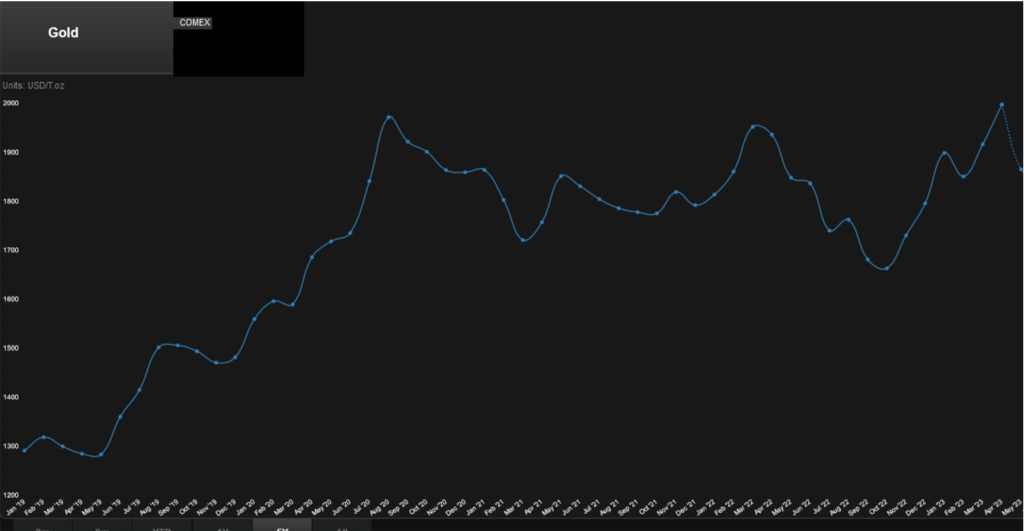
We also saw Palantir, who has nothing to do with gold, take $50 million of gold off of their balance sheet this month.
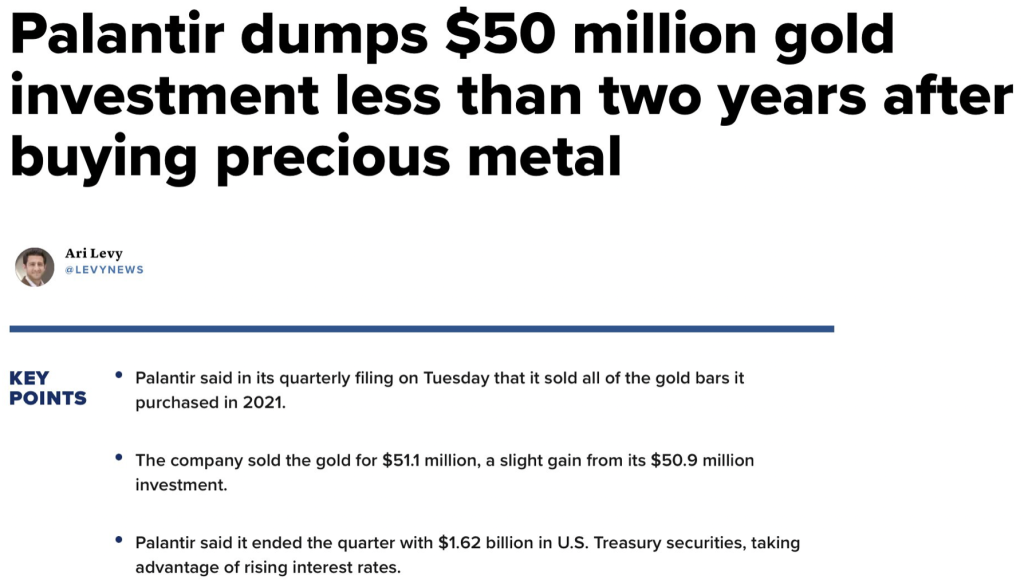
So is that an indicator of things to come? Are people trying to kind of dump some of their gold at these high prices because they’re seeing some derisking around, say, the dollar, which you’ve seen rise over the past couple of days?
Amelia
Yeah, I definitely think people are taking profit on gold when it got to the high, like 2050, whatever, last week, and then it’s still above that psychologically important level of 2000. I think it’s just been chopping around with, I think mostly the banking, the regional banking headlines, like, how that’s going? And I had a chart of the regional banking index versus gold, and they’ve been following each other pretty closely since the turmoil back in early March. But I think what we have to consider here is just the World Gold Council is obviously all over this is the central bank buying. So there’s been a strong buy by the Central Cank of China monetary authority there in Singapore and Turkey all through Q1. They’ve led that central bank buying. And I think a lot of the answer to the question you asked depends on will these central banks continue to buy throughout the year? Because that’s definitely providing like, a base.
Tony
So when a central bank buys gold, to me, I could be wrong. So tell me if I’m wrong. To me, that doesn’t necessarily say they have a huge amount of faith in their underlying fiat currency. That tells me they’re buying gold. To imply strength into their fiat currency. Am I wrong there?
Amelia
Yeah. The World Gold Council has done a lot of research and reports on this. They are claiming it’s for diversification purposes and that these countries are worried about inflation for their fiat currency. They’re kind of arming themselves against inflation. They’re arming themselves against a possible dip in the value of their other reserves.
Tony
Right. And so when I see people on certain social media platforms claim that China buying gold means we’re all going to be spending CNY in ten years, I take the opposite side and it tells me that they’re actually worried about the value of CNY and need to spend dollar reserves to get gold while they can do it.
Amelia
Yeah, I would agree with you there. And plus the IMF, I mean, there’s been this big de-dollarization debate, which is I formally worked before diamond standardized fancy data who really followed capital flows. And if you look out on Twitter especially, you follow like Brad Saster from he’s an expert on this. He tweets a lot about it. It’s kind of interesting. Yeah. Reserves are China Yuan were like 2.4% and then last year, and then the dollar was still like, well over 50% and Euro was 20%.
Tony
Right.
Amelia
They’ve moved up over the decade, but not by much. I mean, they only have like, what, about two and a half percent of global reserves.
Tony
Right. And when we see people like Argentina saying they’re going to pay for all their imports in CNY again, what that tells me is they’re out of dollars, so they.
Amelia
Need dollars. Yeah, Brad made that point as well on Twitter. He had some figures behind it, but yeah, they’re out of dollars.
Tony
Yeah. They need some other fund ticket to pay for their imports. Right. That’s basically what it is. It could be anything, but CNY, it’s got the most behind it right now in terms of enthusiasm, I guess.
Amelia
Right, right.
Tony
They import a lot from China.
Amelia
Yes, exactly. And what would you rather have on your balance sheet, like Indian rupees or China Yuan. Because you can buy manufactured goods from China with the currency at least. Russia and India in the diamond industry, we’re trying to figure out a payment system for diamonds between them. But the talks they announced like a couple of weeks ago, the talks just fell flat because I think Russia didn’t want all these Indian rupees, like, on their balance sheet, basically.
Tony
Right, exactly. All of that is just telegraphing people’s confidence in the central bank. Right. And I’ve said this several times. I don’t know of many people who research the credibility of the PBOC in China, but I would encourage everybody to research the PBOC. How do they make their policy decisions? How do they decide on the levels of their interest rates, these sorts of things. If you can find the research, you’ll be really shocked at what you find. So again, I’d encourage everybody to do that. So Amelia, thank you for that. I really appreciate that’s.
Tony
Annemarie, let’s talk about choppy markets. Okay, so you’re pretty brilliant market tactician, and we’ve seen chop in the last really a lot in the last month on the S&P. We’ve got a chart on screen.
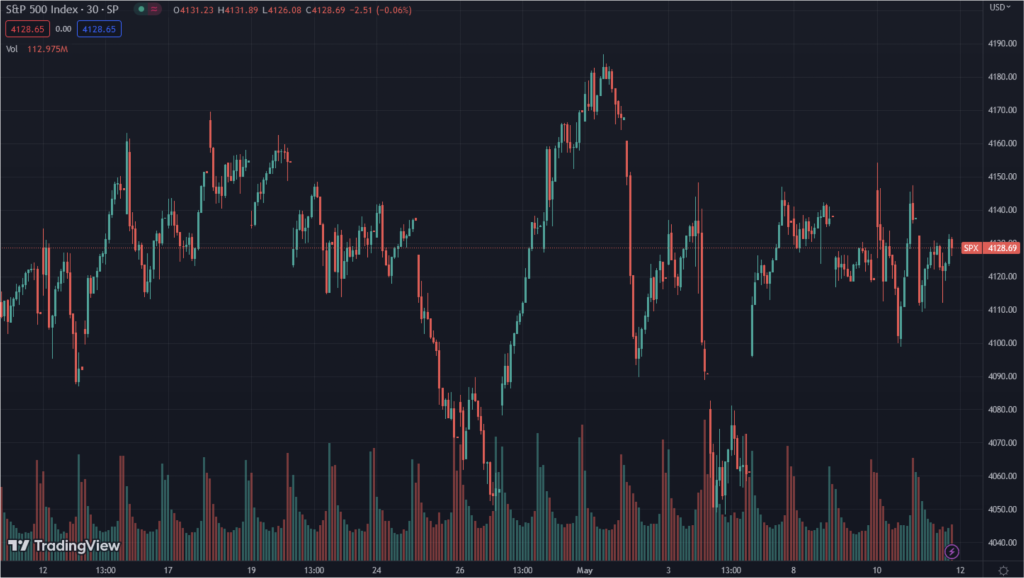
So what are you looking at right now to make your way through the chop? Is it daily? Is it hourly? And what are you looking at to understand what the chop means?
Anne-Marie
So I like to look at the monthly charts, and what that ends up telling me mostly is that we’ve been caught in a fairly big range and every time we’ve tried to break out above it, when everybody goes, hey, it’s going to be a great long, everybody needs to buy, really? Even on a day like today, it ends up not happening. And so I think we’re in I like to look at the ES because I trade it every day. And so the ES futures, really, if we look at a composite monthly chart, we can see that we’re caught in a slog trying to break out. And so then my question becomes, all right, well, if we’re trying to break out and we can’t, where do I find the pervasive bid? And that really is what we are seeing. We’re seeing a pervasive bid. No matter how deep we go, somebody comes in and holds the floor. And so we can literally look at the last five or six months and see that we’ve got higher lows coming into the space. But if you’re holding on for a breakout, it’s just not the best thing to do.
Anne-Marie
So that makes me look at all trading very tactically right now. And I suspect there’s some kind of catalyst that’s happening here. And to me, because the macro voices are so negative and so loud, I mean, the bullhorns they have in the Twitter sphere, it’s incredible, right? And so what I believe is happening is that a lot of people are shorting and then as it comes into support, they have to buy to cover and it turns the market right around. And then people who are thinking about the breakout, they buy the breakout, they get slammed because there are more people, as soon as they get stopped out of their short, they’re looking for the next high to put on another short. Okay, go ahead.
Tony
How long does this last? And what are those things? You say you’re looking for some signs of a breakout. What are those things aside from a Fed saying, hey, we’re going to go completely dovish, right. But what are some of those things that you’re looking at?
Anne-Marie
So to be a contrarian, if the Fed were to say, hey, we’re going completely dovish, I’m looking for my blanket to hide under the bed, that’s something, right? And so I would suspect that if anything like that happens, it probably will turn the market on its heels and will get even the worse effect. So because I don’t have a good handle on how macro voices come together and make decisions, right? So somebody like Felix Zulov comes out and he says, well, I think DA DA DA DA DA. For me, being able to pull all those strings together and make a bow, it’s almost impossible because of our known unknowns and because of our unknown unknowns. We sit in such diametrically opposed environments with nothing that’s gravitating us into any kind of central sensibilities. To me, it seems like we’re just going to pull until the rubber band breaks. And whatever that rubber band is, maybe it’s war. Maybe it’s like Dr. Pippa was talking about, these Chinese and Russian guys are blowing their satellites up and creating these huge debris fields so that our ability to have satellite information really could be compacted because they just want to stop flow, right?
Anne-Marie
Just before the Ukraine war, they went down and tried to cut those Internet cables that were everything. Think about this. If we did not have great technologies that brought us together, the four of us could not be sitting here today. And so what I expect is that we slosh around and then we get up one morning and we’re limit down on everything because of some sort of whatever, and then the market tries to capture that bid and then we realize that we can’t break out again. And then something starts to unwind more dramatically. But I think there’s sort of a what is that? Is it William Faulkner that said, how do you go broke slowly and then all at once?
Tony
Oh, that was the guy who ran with the bulls. Yeah.
Anne-Marie
But anyways, my thought is what we have to see is some dramatic systemic jolt that makes things fade sharply and then people go in, oh, here’s my opportunity to buy. And they buy and we can’t recapture those levels and that gives us the unwind. And now, because I have this amazing faith in the human spirit, there’s also the thought that, hey, listen, we’ll just adapt, divide and conquer in a brand new space. And so we’re going to see that fourth turning, as it were, right where we have a lot of things break and then ashes come out and there’s a new Phoenix on the horizon.
Anne-Marie
And so to punt, I’m going to say I have no idea. But what I do know is as it sits, I must trade tactically. I must have my eyes completely focused on risk. And within that environment, although it puts me in a space where there are a lot of places I could make a ton of money, but I don’t because I’m not leveraged as strongly as I could be. I’m still seeing a lot of people looking at the fire doors, going, okay, do I have a clear exit just in case anything happens? So I’m not decimated for the next time. It’s a great buying opportunity.
Tony
Yeah. So it tells me you say you have no idea, but you’re kind of expecting for us to wake up one day to a big negative surprise and everything limit down, is that I would.
Anne-Marie
Say that the way things reset is usually by a floor giving way. I don’t think things reset with a continual drive to the north because then there’s no real desire to reset. Why should I reset if things are completely continuing upward? And so that’s where I think we are right now. I think that even though there are all these people that are short and all the volumes within the market continue to diminish because money is going to places that it’s being treated better and so with less risk. And so that grind up on that thinning volume is just a classic. It’s a classic pattern of that rising wedge under diminished volume. It’s going to have an air pocket that eventually fills in.
Tony
Interesting. Okay, so we keep seeing, say, supercore rise gradually. We keep seeing wages go up, and that continues to pressure the Fed. We saw a unanimous vote in the Fed this month. Right. And so that I hear a lot of people who want to be more dovish. But it’s really hard. It’d be really hard for the Fed to go from a unanimous rise towards some sort of pivot. They could potentially go into a pause if we saw some dramatic numbers, but I’m just not seeing dramatic numbers. We’re seeing some positive numbers, some negative numbers. If we look at, say, consumer expectations, they’re still expecting higher inflation, these sorts of things. Right. But do you have any idea of what that dramatic number could be for us to all wake up and go, oh my gosh, this is bad?
Anne-Marie
I don’t think it’s going to come from the central banks per se. We could have a sovereign crisis that makes something go bad. And so that is certainly key, particularly as interest rates rise and everybody has US. Debt and they need to pay back. It’s going to take more of their dollars than ours and so on and so forth. I don’t think it comes from the Fed. I don’t think it comes from the central banks in essence. I think we see something physically important to us happen. I think it might be caused by what’s going on. But again, my crystal ball is very dusty right here.
Tony
Okay? So if we saw a couple of countries pull a Sri Lanka right, where everything falls apart, the government loses credibility. They have to refinance everything. Let’s say a Turkey or Brazil or something like that, we’d probably see some dominoes fall there. And that could be the type of event it’s almost the regional banking crisis at a sovereign level.
Anne-Marie
Yes.
Tony
That’s a global level.
Anne-Marie
Yes.
Tony
Interesting. Okay.
Tony
Yeah. I’m going to keep an eye out for that. Okay, guys, given where we are in this kind of choppy land. What are you guys expecting? Tracy, let’s start with you. When you look at energy and commodities markets, what are you expecting in the next couple of weeks? Are you expecting any change of direction? Do we see some seasonal, say uplift in crude prices, something like that?
Tracy
I think that we’ll probably just be kind of chopping around in this area. OPEC is going to have their regularly scheduled meeting. They used to have monthly meetings, but their actual regularly scheduled meeting in June, 1 week of June. And so I think markets are kind of waiting on that, to be honest. Unless you see some huge catalyst to move this in either direction quickly or I think we’re in this chop zone and people are really traders are really waiting to see what they say at this meeting.
Tony
Okay, so we’re just looking for direction generally. Do all you guys agree? Amelia, do you see anything different or do you have kind of a strong, strong opinion? Either way?
Amelia
I agree with Tracy. I think we’re just going to be chopping around. I think Marcus need a catalyst, speaking to the other points we made here. But I mean, I’m a macro person, right? So I’m kind of like a doomsday prepper by nature. So with all of these risks out there, whether they’re geopolitical or a possible sovereign crisis or the US hitting the death ceiling or, I don’t know, inflation really turns around and goes down quickly, I’m not sure. But I feel like you do need to hedge. I feel like precious metals, you do need a safe haven component to your portfolio. Even like more regional banking banks fail here in the US. So I think the outlook is really unclear. And I just think, as you guys know, really smart people, whether from hedge funds, banks, central banks, like analysts, FinTwit, you see it everywhere. Smart and respectable people are really disagreeing with each other outlook and the timing of events. And so that just tells me, as a macro trader, use that uncertainty as an opportunity, right. And try to put your hedges on and be ready for that next break.
Tony
Great. Okay, guys, thank you so much. This has been really amazing. I really appreciate your time today and thanks so much. Have a great weekend. And have a great weekend. Thank you.


